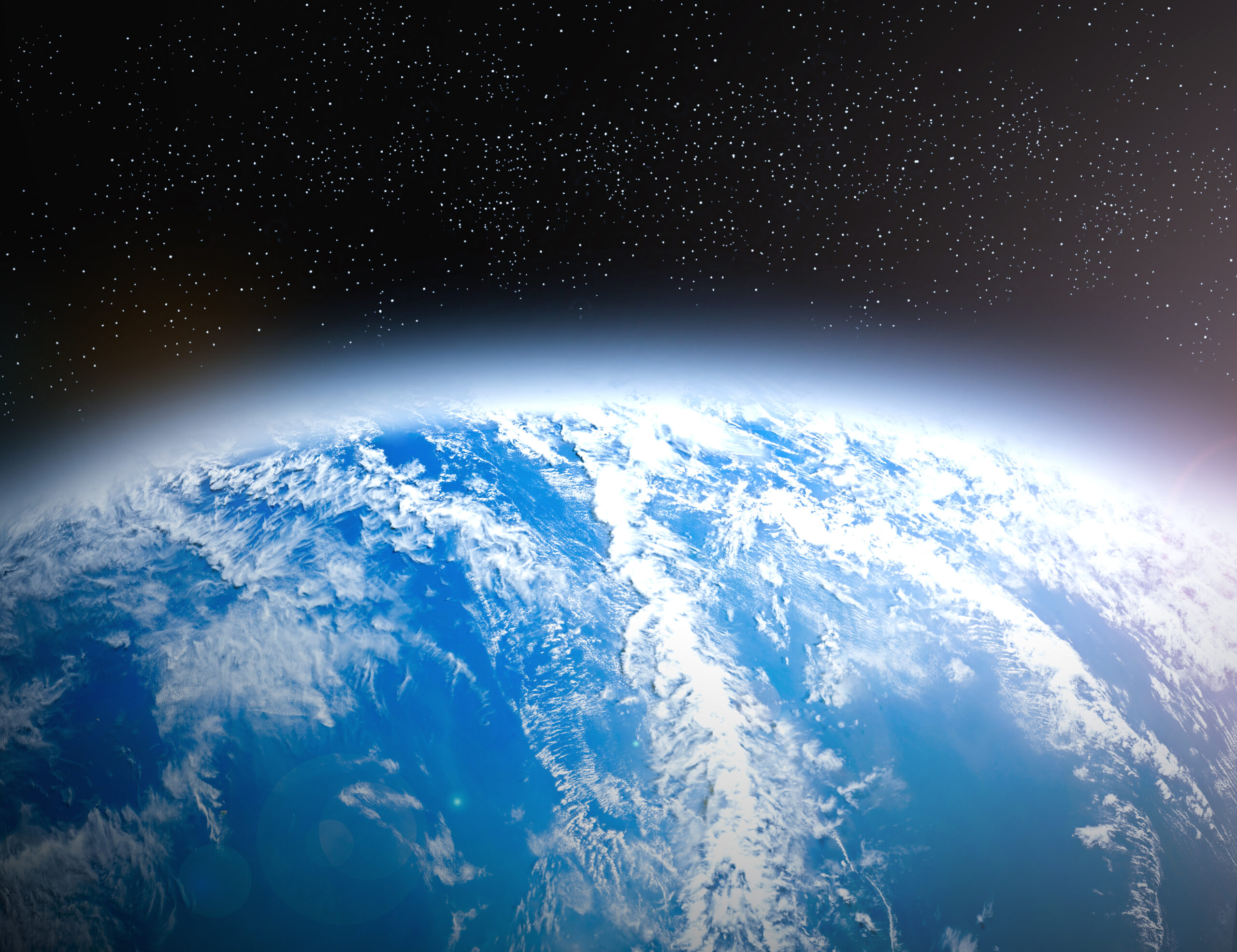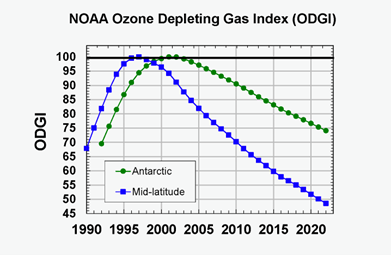Ozone Layer recovery reaches half-way milestone, and no ozone hole in the tropics
 National Oceanic and Atmospheric Administration (NOAA) scientists have announced that in early 2022, the overall concentration of ozone-depleting substances in the mid-latitude stratosphere had fallen just over 50 percent on the path back to levels observed in 1980, before ozone depletion was significant. And the very short lived (in the news) ozone hole in the tropics never existed according to atmospheric science experts.
National Oceanic and Atmospheric Administration (NOAA) scientists have announced that in early 2022, the overall concentration of ozone-depleting substances in the mid-latitude stratosphere had fallen just over 50 percent on the path back to levels observed in 1980, before ozone depletion was significant. And the very short lived (in the news) ozone hole in the tropics never existed according to atmospheric science experts.
An annual analysis of air samples collected at remote sites around the globe is tracking the continued decline in the atmospheric concentration of ozone-depleting substances. Scientists at NOAA’s Global Monitoring Laboratory created the index to render the results of a series of complex analyses into a single number that tracks the total abundance of these chemicals and how the threat they pose to the ozone layer is changing over time. In contrast to the mid-latitudes, progress toward recovery of the ozone layer over the Antarctic has not been as rapid, declining by 26% from peak values in the 1990s for multiple reasons, but particularly because air in the Antarctic stratosphere is older than in mid-latitudes. The 2022 index for the Antarctic has fallen 26% from peak values in the 1990s, with recovery of the Antarctic ozone layer projected to occur sometime around 2070.

The Ozone Depleting Gas Index (ODGI) vs. time calculated for the Antarctic and mid-latitude stratosphere. As before, the ODGI derived directly from the Equivalent Effective Stratospheric Chlorine (EESC) determined from our atmospheric surface observations. Credit: NOAA Global Monitoring Laboratory
The ‘ozone hole’ in the tropics was widely reported, following the publication of a paper by a Canadian researcher, claiming that ‘an ozone hole, seven times larger than the Antarctic ozone hole, is currently sitting over tropical regions and has been since the 1980s’. The observation of the ozone hole came as a surprise as it was not predicted by conventional photochemical models. However, according to eminent atmospheric scientists there is no ozone hole in the tropics, as the author of the claim looked at percentage changes in ozone and not absolute changes. Ozone concentrations in the stratosphere in the tropics are influenced by global air circulation which has accelerated in recent years.
Sources:
NOAA - National Oceanic and Atmospheric Administration Path to recovery of ozone layer passes a significant milestone - NOAA Research
Tropical ‘ozone hole’
https://phys.org/news/2022-07-discovery-reveals-large-year-round-ozone.html
New tropics ozone hole is 7 times bigger than Antarctic hole, study says
https://www.livescience.com/debunker-new-hole-in-ozone
Report Of Massive New Ozone Hole Threatening Billions Contains ‘Serious Errors’ (forbes.com)
https://www.sciencemediacentre.org/expert-reaction-to-research-claiming-ozone-hole-over-tropics/